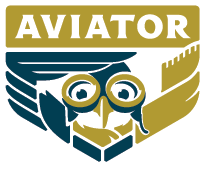My Bird Gets Enough Exercise, Doesn’t He?
Thinking on the Wing
Birds and people alike usually need more physical and mental exercise than just sitting at a desk or hanging out around a cage.
When we run, ski, ride a bike or drive a fast car, our entire body chemistry changes in a matter of seconds. This is because all of our senses of sight, sound, touch and hearing shift into an entirely different gear. The task of knowing what is going on around us when we are moving at a normal pace becomes a very complicated three dimensional puzzle of super-fast decisions. Our brain has to learn to figure out what important things are changing while everything is changing around us. The same thing happens to a bird when he has the freedom to fine tune his flying skills.
Read More at: Thinking on the Wing with the Aviator Bird Harness
Exposure to full spectrum light
For a bird to benefit from even the best indoor full spectrum lighting system it is necessary to have a very high intensity light source very close to the bird for several hours a day. If the light source is not intense enough to eventually cause sunburn it is of little benefit. Outdoor light intensity is hundreds of times greater and makes contact with the entire bird. Inside light sources are too low and usually illuminate only one side of the bird at a time.
Stronger bone density – Prevent Egg-Binding
Without lots of exercise, even the best diet will not maintain adequate bone density. As a bird flies a great deal of stress is put on all of the bones, which increases bone density and strength. To maintain adequate bone density as an adult a young parrot needs to aggressively exercise to develop very dense bones so they can maintain bone density as they get older.
It is important not to confuse passive play with toys and flapping wings on top of the cage as activities that encourage bone and muscle development. The activities must involve weight bearing or resistance exercises. A parrot can only truly achieve these goals through flight.
Improved cardiovascular system
Wild parrots fly for miles and do not pant when they land. Most parrots cannot run across a room without becoming oxygen deprived.
Without a fit cardiovascular system, most birds cannot be considered in good health. Parrots suffer from all of the same problems inactive people do. For 20 years veterinary medicine has been preoccupied with learning about basic health and disease control just to make the average parrot “well”, soon they will start considering your pets “fitness”.
Below are some of the benefits of exercise for both people and parrots.
lower blood pressure
increased HDL cholesterol
decreased total cholesterol
decreased body fat due to utilizing fat as energy
increased heart function and its ability to pump more blood
reduce glucose-stimulated insulin
increased oxygen output to body
decreased resting heart rate
increased cardiac output
increase aerobic work capacity
reduced anxiety, worry and fear, often called “phobic” in aviculture
reduced arthritis, especially as our parrots age
Better nutrient absorption
Nutrient absorption would not be of much concern if our pets were getting lots of exercise. Flight exercise pulls on every muscle, organ and tissue in the birds’ body. This increases the strength of all of the pieces and parts and helps them to hold together better. One major benefit is increased blood flow everywhere, including the intestines. Increased blood flow improves intestinal motility and flow ensuring that the intestines absorb all the micronutrients that are passing by.
Better balance and physical dexterity
A by-product of physical activity is improved overall motor coordination and increased physical skill. Basically, the ability to stand up straight and feel confident.
More interaction with owner leads to increased mental skills.
More activities to do with your pet will increase the time you spend interacting with them. Sitting around watching TV and repeating the same routine day after day is not considered a learning experience by most of us. On the contrary new experiences combined with lots of exercise greatly increased the amount of thinking that goes on in a parrot’s brain. Thinking on a higher-level while being active, and actively interacting with their best friend will raise the IQ and knowledge of your friend. Higher intelligence and more life experience almost always lead to an increased enjoyment of life.
Conclusion: Higher self-esteem
Self-esteem is not easily observed in parrots but most owners fortunate enough to have been around a developing baby parrot have seen the euphoric expressions and bounding body language a happy confident parrot shows when he thinks he is a cool dude. During this juvenile development stage, the brain does not recognize failure the same as an adult. Nature has provided this ‘I think I can, I think I can’ attitude so that baby parrots will keep working at every task until they get it right, because the chance of failure in the wild is so great.
This ‘I think I can’ attitude is much less common in older parrots. As the baby moves into adolescence, usually with their wings clipped, their brain starts to realize that intense exercise and activity usually leads to an uncoordinated result. Just like us, they lose interest in things they cannot do well.
Confident parrots are outgoing, positive and are not afraid of taking on new challenges. There are no phobic birds at the parrot athletic center.
